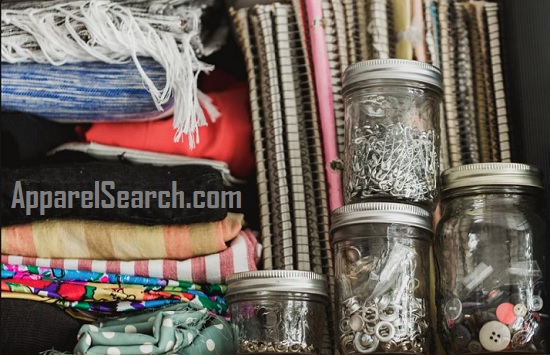Textiles have an assortment of uses, the most common of which are for clothing. Textiles are used in many traditional crafts such as sewing, quilting and embroidery.

Textiles are made from many materials, with four main sources: animal (wool, silk), plant (cotton, flax, jute), mineral (asbestos, glass fiber), and synthetic (nylon, polyester, acrylic). Learn more about textile fibers.
Read Textile Industry News:
Textile News (on the Fashion Blog)
Textile Industry News Articles
Indian Times Textile Industry News
Textile World Textile Industry News
The following may be helpful reading for before you read textile industry news articles. Some of the basics may help your reading comprehension.
What are textiles?
The related words "fabric" and "cloth" are often used in textile assembly trades (such as tailoring and dressmaking) as synonyms for textile. However, there are subtle differences in these terms in specialized usage.
A textile is any material made of interlacing fibers, including carpeting and geotextiles. The word 'textile' is from Latin, from the adjective textilis, meaning 'woven', from textus, the past participle of the verb texere, 'to weave'.
A fabric is a material made through weaving, knitting, spreading, crocheting, or bonding that may be used in production of further goods (garments, etc.). The word 'fabric' also derives from Latin, most recently from the Middle French fabrique, or 'building, thing made', and earlier as the Latin fabrica 'workshop; an art, trade; a skilful production, structure, fabric', which is from the Latin faber, or 'artisan who works in hard materials', from PIE dhabh-, meaning 'to fit together'.
Cloth may be used synonymously with fabric but is often a piece of fabric that has been processed. The word 'cloth' derives from the Old English clað, meaning a cloth, woven or felted material to wrap around one, from Proto-Germanic kalithaz (compare O.Frisian 'klath', Middle Dutch 'cleet', Dutch 'kleed', Middle High German 'kleit', and German 'kleid', all meaning "garment").
Textile manufacturing is a major industry. It is based on the conversion of fiber into yarn, yarn into fabric.
Textiles are made in various strengths and degrees of durability, from the finest microfibre made of strands thinner than one denier to the sturdiest canvas. Textile manufacturing terminology has a wealth of descriptive terms, from light gauze-like gossamer to heavy grosgrain cloth and beyond.
Textile design is the art of manipulating the appearance of fabrics and other materials through traditional, stylized, digital and illusory techniques to make a product fashionable. Techniques for textile design include weaving, knitting, embroidery, lacing, beading and embossing.
There are currently at least six forms of textile production. They include weaving, knitting, and braiding. Felting, bonding, and spread tow are other types.
Weaving is a textile production method which involves interlacing a set of longer threads (called the warp) with a set of crossing threads (called the weft). This is done on a frame or machine known as a loom, of which there are a number of types. Some weaving is still done by hand, but the vast majority is mechanized.
Knitting, looping, and crocheting involve interlacing loops of yarn, which are formed either on a knitting needle, needle, or on a crochet hook, together in a line. The processes are different in that knitting has several active loops at one time, on the knitting needle waiting to interlock with another loop, while Looping and crocheting never have more than one active loop on the needle. Knitting can be performed by machine, but crochet can only be performed by hand.
Spread Tow is a production method where the yarn are spread into thin tapes, and then the tapes are woven as warp and weft. This method is mostly used for composite materials; spread tow fabrics can be made in carbon, aramide, etc.
If you are interested in learning more about fabrics, you may want to check the following pages after you visit the above websites to read textile industry news.
You may want to also visit our fashion industry news section.
Return to the top of this textile industry news page.
About Textiles:
A textile is a flexible material consisting of a network of natural or artificial fibes. yarn is produced by spinning raw fibers of wool, flax, cotton, hemp, or other materials to produce long strands. Textiles can be formed by weaving, knitting, crocheting, knotting, felting, or braiding.
Learn more about textiles here on Apparel Search.
Thank you for using the Apparel Search website.
